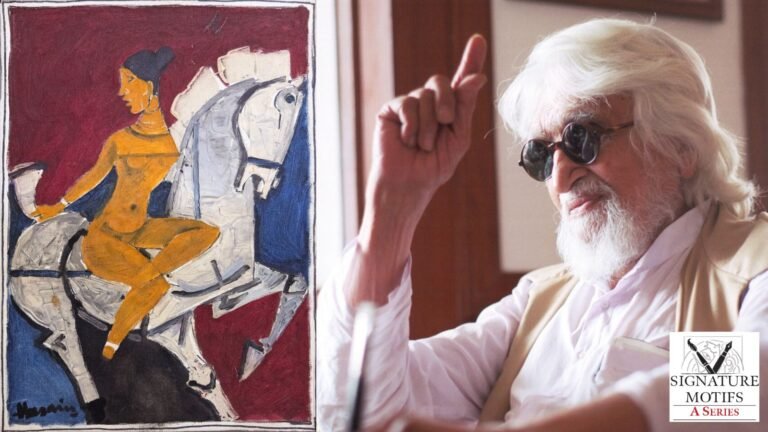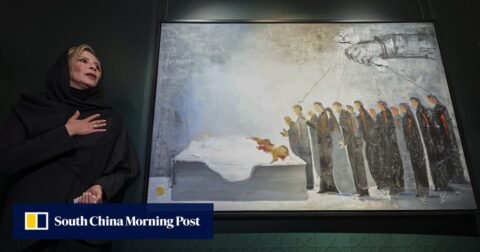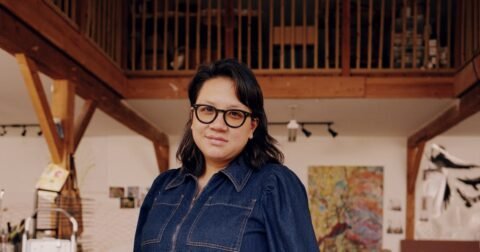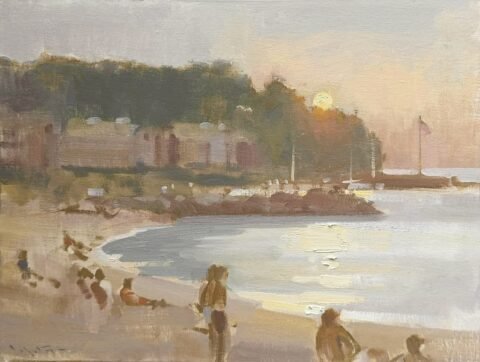(This is part of a series on Indian masters and the motifs that appear repeatedly in their works. Next: SH Raza’s Bindu)
Maqbool Fida Husain, one of India’s most recognised and revered artists, is known for his bold and striking depictions that drew inspiration from a multitude of sources, from Indian mythology and folk traditions to Western art movements.
The motif most associated with Husain is his horses. These majestic creatures feature across Husain’s oeuvre: he was painting horses in the 1930s, while still making a living as a cinema-hoarding maker in Bombay (now Mumbai), as he was in the late 2000s, while in a self-imposed exile from India.
Diverse influences
Growing up in Indore, where his father was a timekeeper in a textile mill, Husain often shared fond memories of playing with clay horses as a child and riding carousel horses at village fairs.
A friend of his grandfather, who worked as a farrier (someone who takes care of horses’ hooves), gave young Husain close access to the agile animals, allowing the budding artist to study their anatomy in detail. The artist was also inspired by the papier-mâché replicas of Duldul — Prophet Muhammad’s white mule — that were paraded in the streets during Muharram processions.
“My horses, like lightning, cut across many horizons. Seldom their hooves shown. They hop around the spaces. From the battlefield of ‘Karbala’ to Bankura terracotta, from the Chinese Tse pei Hung horse to St. Marco horse, from ornate armoured ‘Duldul’ to challenging white of ‘Ashwamedh’ […] the cavalcade of my horses is multidimensional,” Husain had said in 1987, according to a note on the Christie’s website.
While the artist’s dynamic lines were guided by the works of German expressionist Franz Marc and Italian sculptor Marino Marini, the fragmented, angular forms reflected a cubist vocabulary.
Story continues below this ad
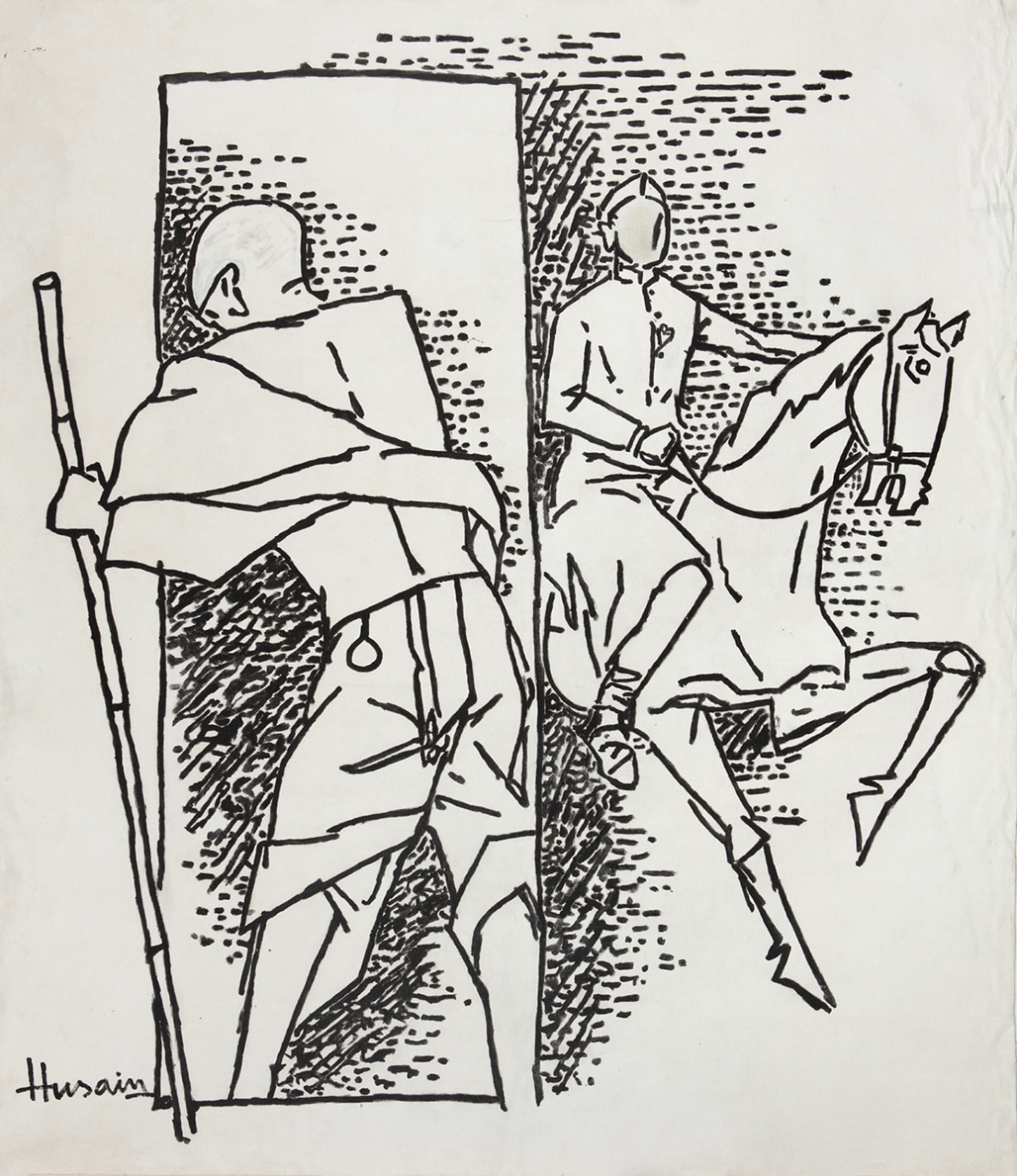 ‘Untitled (Gandhi and Nehru)’ by MF Husain. (Photo courtesy DAG)
‘Untitled (Gandhi and Nehru)’ by MF Husain. (Photo courtesy DAG)
Diverse depictions
Rarely static, Husain’s horses are powerful creatures that exude immense grace.
“The horse, to [Husain], represented masculinity, and he painted them singly, in pairs, or in herds. Strangely, he never painted their hooves. His horses were depicted in motion, capturing their elegance and speed,” Ashish Anand, managing director and CEO of DAG art gallery, told The Indian Express.
Passage of Time, painted in neutral shades in 1954, was one of Husain’s early major canvases featuring the horse as the central figure. He painted several untitled works depicting horses in the 1950s and 1960s, before creating Duldul in 1967 with thick impasto and fractured lines.
Story continues below this ad
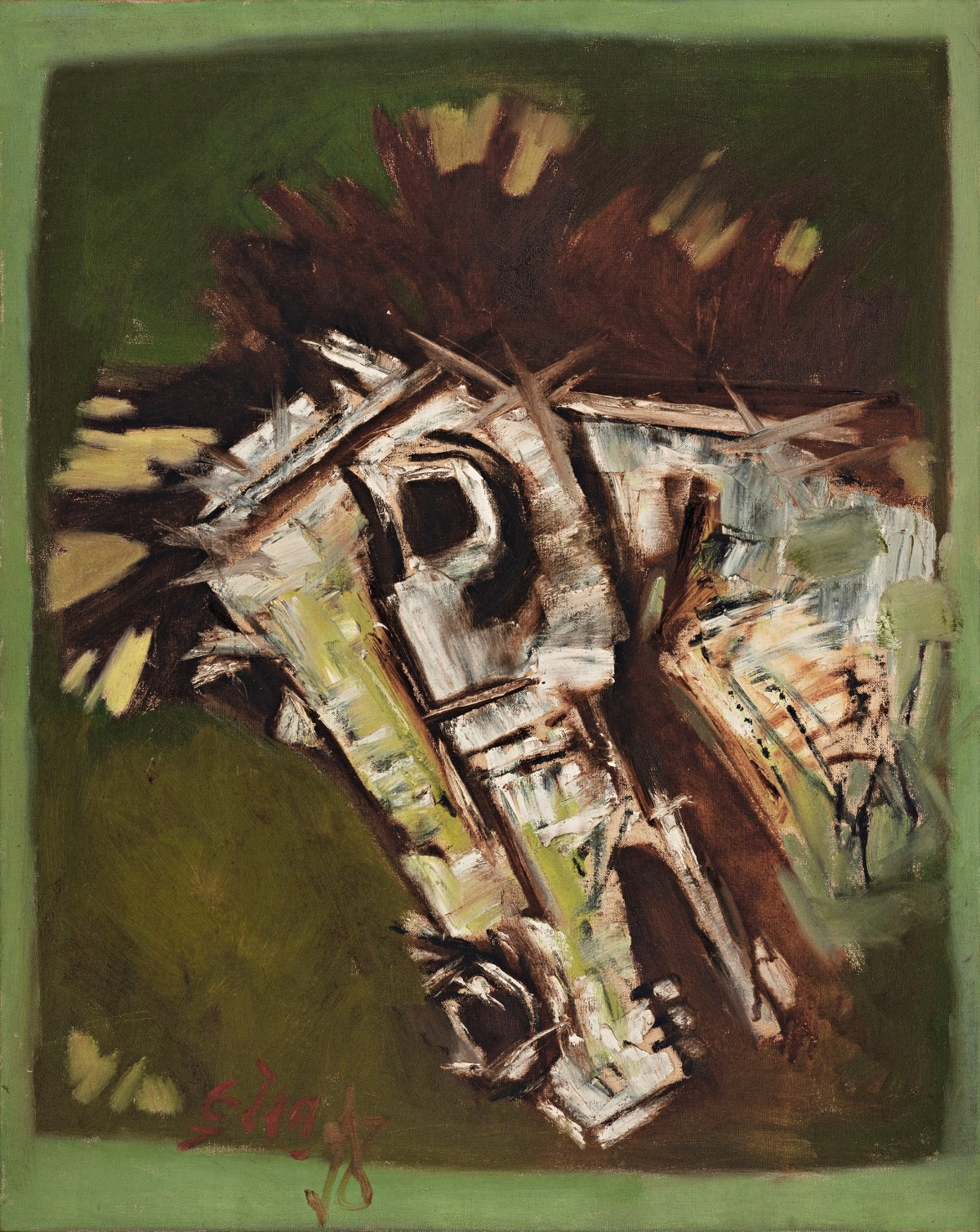 ‘Untitled’ by MF Husain. (Photo courtesy DAG)
‘Untitled’ by MF Husain. (Photo courtesy DAG)
“Sometimes he also represented them alongside female nudes, as in his wonderful painting of the Three Graces (1990). One of his largest paintings titled Lightning (1975), is entirely made up of galloping horses. Later, his Raj series (1980s) showed maharajas and viceroys playing polo mounted on horses,” Anand said.
In 1991, Husain depicted Zuljanah, Imam Husayn’s loyal horse, celebrated for his valour in the Battle of Karbala. Karbala Horse (Zuljinah) shows the dark equine striding across the River Euphrates.
Painted in the late 1990s, Seven Horses alluded to the Hindu mythological depiction of Surya, the sun god, whose chariot is pulled by seven horses.
Husain’s very last series, meant to be an ode to diversity and pluralism in India, also featured horses. Commissioned in 2008 by Usha Mittal, the wife of steel baron Lakshmi Mittal, the series remained incomplete due to the artist’s demise in 2011.
Appreciated & critiqued
Story continues below this ad
Globally recognised as his signature motif, Husain’s horses have drawn both criticism and acclaim over the years. Among others, author Mulk Raj Anand reportedly described them as “bourgeois subject matter”. Some art critics also feel that Husain repeated the motif rather too often, particularly after the 1970s.
For Husain, however, horses remained an inherent part of his artistic vocabulary and symbolism, one he never shied away from, regardless of how critics felt.
“Horses have always been a part of Indian art but it was Husain saab who made them a specific subject all his own. The only other artist who painted horses with as much zeal throughout his career was Sunil Das, but he depicted them realistically while Husain’s work was expressionistic,” Anand said. “Representing horses’ energy and dynamism, Husain’s paintings, often massive, command attention in any room where they are displayed.”

